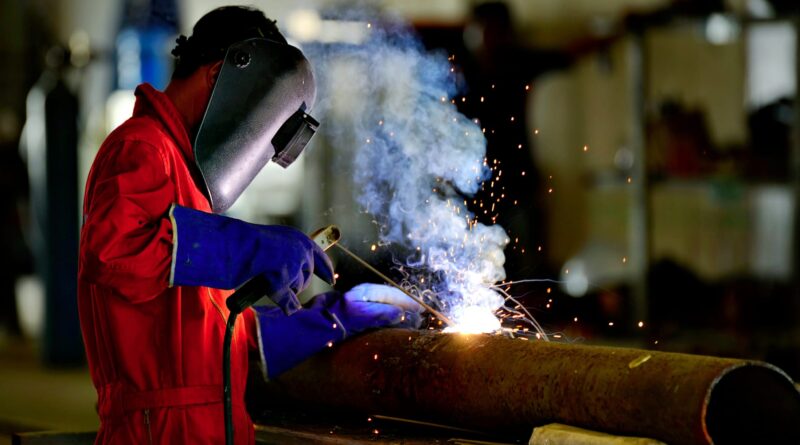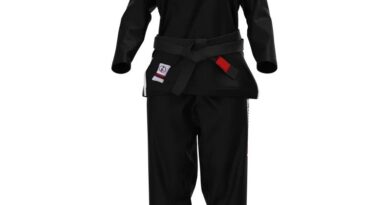How does the welding wire affect the welding process?
Introduction
Are you interested in welding but not quite sure how the process works? Well, one of the most important aspects of welding is the type of welding wire used. Whether you’re a professional welder or just starting out, understanding how different types of wires affect the welding process can make all the difference in achieving successful and high-quality welds. In this blog post, we’ll dive into everything you need to know about welding wire and its impact on your work! So grab your safety goggles and let’s get started!
What is welding wire?
Welding wire is a vital component in the welding process. It’s a thin metal electrode that melts and connects two metals together when exposed to heat generated by an electric arc or flame.
This wire comes in different shapes, sizes, and materials depending on the type of welding process being used. For instance, MIG (metal inert gas) welding requires a spool of solid wire while TIG (tungsten inert gas) welding uses long rods made from tungsten.
Welding wires are also categorized based on their composition such as stainless steel, aluminum, copper-coated steel, carbon steel among others. The choice of material will depend on the application requirements like strength, conductivity, corrosion resistance or appearance.
The diameter of the welding wire can also vary depending on what needs to be welded. A thicker diameter may be suitable for heavy-duty applications where high deposition rates are needed. Conversely, a thinner diameter may provide more precision but at slower speeds.
In summary, understanding which type of welding wire to use depends heavily on the specific job requirements and desired outcome. Choosing the right kind will help ensure quality welds that meet project specifications while minimizing waste and rework costs.
The different types of welding wire
When it comes to welding, choosing the right type of welding wire is crucial for achieving a successful weld. There are several different types of welding wires available in the market, each with its unique characteristics and applications.
The most commonly used types of welding wires include MIG (Metal Inert Gas) wire, TIG (Tungsten Inert Gas) wire, and Flux-Cored Wire. MIG wire is best suited for mild steel and aluminum applications while TIG wire is ideal for stainless steel and non-ferrous metals. Additionally, flux-cored wire can be used on thicker materials that require higher heat input.
Each type of welding wire also comes in various sizes ranging from 0.023 inches to 0.045 inches in diameter. The size you choose will depend on your specific application requirements such as the thickness of the metal being welded.
Welding is a critical process in many industries, and selecting the best welder machine is essential to achieve high-quality results. Here the top 10 best welder machine are equipped with advanced features such as adjustable settings, easy portability, and durability to enhance the welding process’s efficiency.
It’s worth noting that some manufacturers offer specialty wires designed for specific purposes like high-strength or low-alloy steels.
When choosing a welding wire, it’s essential to consider factors like material thickness, joint design, shielding gas availability/requirements etc., as these factors will affect your overall results.
Understanding the different types of welding wires available and their respective strengths can help you make an informed decision when selecting one for your next project.
The welding process
Welding is a process of joining two or more metal pieces together by heating them to their melting points and then allowing them to cool and solidify. The welding process typically involves the use of a welding wire, which serves as an electrode that carries an electric current. This electric current creates an arc that melts the metal into a molten pool, where it fuses with the base material.
There are several different types of welding processes, including gas tungsten arc welding (GTAW), gas metal arc welding (GMAW), shielded metal arc welding (SMAW), flux-cored arc welding (FCAW), and many others. Each type of welding process has its own unique benefits and drawbacks, depending on the specific application.
The most important aspect of any type of welding process is safety. Welders must wear appropriate protective gear, such as gloves, helmets, and jackets to protect themselves from sparks and heat generated during the weld. They should also ensure proper ventilation in their workspace to avoid inhaling dangerous fumes.
While there are many factors that can impact the success of a weld job – such as temperature control, filler rod selection and technique – understanding the basics behind how each individual step in this complex task works will help you better understand how your decision making impacts your final product’s quality.
How does the welding wire affect the welding process?
The type and quality of welding wire can significantly affect the overall welding process. The welding wire acts as a filler material that is melted to join two pieces of metal together. Choosing the right type of welding wire for a specific job is crucial in ensuring the weld strength, appearance, and longevity.
The diameter and composition of the welding wire are essential factors to consider when selecting it. For instance, thicker wires are typically used for heavier materials while thinner wires work best for lighter materials. The composition also affects how easy or difficult it is to use with specific metals.
In addition, some types of welding wires require more preparation before use than others. Some may need to be cleaned thoroughly while others have anti-spatter coatings that reduce spatter during the process.
Furthermore, using low-quality or cheap welding wire can lead to poor results such as weak welds or even equipment damage due to inconsistent feed rates or improper melting temperatures.
Choosing high-quality and appropriate types of welding wire is critical in achieving successful welds that meet industry standards and customer expectations.
Conclusion
To sum up, welding wire plays a crucial role in the welding process. Selecting the appropriate type of welding wire is essential to ensure successful and high-quality welds. Each type of welding wire has its unique characteristics that affect the overall outcome of the weld.
Using an unsuitable or low-quality welding wire can lead to weak, brittle, or porous welds that may fail under pressure. On the other hand, choosing a high-quality and compatible welding wire can result in strong and durable welds with excellent bonding properties.
Therefore, it’s crucial to understand how different types of welding wires affect the quality of your workpiece before selecting one for your project. It’s always recommended to consult with professional experts or refer to manufacturer guidelines while selecting a suitable welding wire for your specific application.
Selecting an ideal and compatible welding wire is critical in achieving robust and long-lasting welds for any given project. With proper selection and understanding of each type’s characteristics will ensure successful results every time you embark on a new job.




